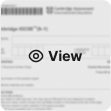No questions found
In which changes do the particles move further apart?
[Image showing transitions: W arrow Y gas, Y arrow W liquid, X arrow Z solid]
In the chromatography experiment shown, which label represents the solvent front?
One of the instructions for an experiment reads as follows.
Quickly add 50 cm$^3$ of acid.
What is the best piece of apparatus to use?
Two statements about diamond are given.
1. Diamond has a giant three-dimensional covalent structure of carbon atoms.
2. Diamond is one of the hardest substances known.
Which is correct?
The table shows the electronic structure of four atoms.
[Table_1]
Which two atoms combine to form a covalent compound?
An atom of element Q contains 19 electrons, 19 protons and 20 neutrons.
What is Q?
Lithium is in Group I of the Periodic Table. Nitrogen is in Group V of the Periodic Table. Lithium reacts with nitrogen to form the ionic compound lithium nitride. What happens to the electrons when lithium atoms and nitrogen atoms form ions? [Table_1]
The equation shows the reaction between magnesium and sulfuric acid. [Ar: H, 1; O, 16; Mg, 24; S, 32]
$$\text{Mg} + \text{H}_2\text{SO}_4 \rightarrow \text{MgSO}_4 + \text{H}_2$$
In this reaction, which mass of magnesium sulfate is formed when 6g of magnesium react with excess sulfuric acid?
The diagram shows an electrical cable. Which statement about the substances used is correct?
What are the products at the electrodes when dilute sulfuric acid is electrolysed using inert electrodes?
[Table_1]
The energy level diagram for the reaction between magnesium and hydrochloric acid is shown.
Which statement about the reaction is not correct?
The diagram shows some properties that substances may have.
To which labelled part of the diagram does $^{235}\text{U}$ belong?
A liquid X reacts with solid Y to form a gas.
Which two diagrams show suitable methods for investigating the rate (speed) of the reaction?
The results of two separate reactions between excess calcium carbonate and hydrochloric acid are shown.
Which statement explains the differences between the reactions?
The equations below all show redox reactions.
$$\text{Fe}_2\text{O}_3 + 3\text{CO} \rightarrow 2\text{Fe} + 3\text{CO}_2$$
$$2\text{ZnO} + \text{C} \rightarrow 2\text{Zn} + \text{CO}_2$$
$$\text{Fe}_2\text{O}_3 + 2\text{Al} \rightarrow \text{Al}_2\text{O}_3 + 2\text{Fe}$$
$$2\text{CO} + 2\text{NO} \rightarrow 2\text{CO}_2 + \text{N}_2$$
Which oxide is oxidised in these reactions?
In which reaction is the colour change from blue to white?
Which statements are properties of an acid?
1. reacts with ammonium sulfate to form ammonia
2. turns red litmus blue
[Table_1]
Part of the Periodic Table is shown.
Which element forms an acidic oxide?
What is the correct sequence of steps for the preparation of a pure sample of copper(II) sulfate crystals from copper(II) oxide and sulfuric acid?
The following tests are carried out on an aqueous solution of salt X.
[Table_1]
What is X?
Where in the Periodic Table is the metallic character of the elements greatest? [Table_1]
Rubidium is a Group I metal.
Which statement about rubidium is not correct?
The table gives information about four elements, P, Q, R and S.
[Table_1]
Which elements could be transition elements?
Part of the Periodic Table is shown. Which element is a gas that does not form a compound with potassium?
Which property is not considered a typical metallic property?
Some chemical properties of three metals W, X, and Y and their oxides are shown.
[Table_1]
What is the order of reactivity of these metals, most reactive first?
Iron from a blast furnace is treated with oxygen and with calcium oxide to make steel. Which substances in the iron are removed? [Table_1]
Copper is sometimes used to make cooking utensils.
Three properties of copper are given.
1 corrosion resistant
2 good conductor of electricity
3 good conductor of heat
Which properties make copper a suitable metal for making cooking utensils?
The diagram shows an experiment to investigate how paint affects the rusting of iron.
What happens to the water level in tubes P and Q?
A new planet has been discovered and its atmosphere has been analysed.
The table shows the composition of its atmosphere.
[Table_1]
Which gases are present in the atmosphere of the planet in a higher percentage than they are in the Earth's atmosphere?
Which of the following are tests for water?
1. It turns anhydrous copper(II) sulfate blue.
2. It boils at 100°C.
3. It turns anhydrous cobalt(II) chloride paper blue.
Sulfur dioxide, carbon monoxide and oxides of nitrogen are common gaseous pollutants found in the air. Which pollutants contribute to acid rain?
Which compound is not used as a fertiliser?
Lime (calcium oxide) is used to treat waste water from a factory.
Which substance is removed by the lime?
The diagram shows the separation of petroleum into fractions.
What could X, Y and Z represent?
Which compound is not an alkane, $C_nH_{2n+2}$?
A hydrocarbon W burns to form carbon dioxide and water. W decolourises bromine water.
What is the name of W and what is its structure?
[Table_1: Contains options with hydrocarbon names and structures]
Which term describes the formation of ethanol from glucose?
Ethene forms an addition polymer as shown.
Which terms describe this polymer?
Which statement about carboxylic acids is not correct?


















